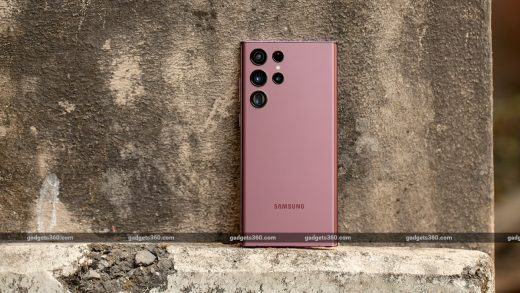:format(webp)/https://www.thestar.com/content/dam/thestar/entertainment/visualarts/2023/03/10/harbourfront-becomes-a-sauna-village-in-art-project-public-sweat/layne_rui_2.jpg)
Layne Hinton and Rui Pimenta want to see you sweat.
The roving curatorial super-duo have been working together for almost 15 years under the moniker Art Spin, offering guided bike tours of galleries and designing public-facing installations at events like Nuit Blanche. This month Hinton and Pimenta are exchanging wheels for flip-flops as they transform Harbourfront Centre’s waterfront grounds into a sauna village. From Wednesday to April 23, “Public Sweat” invites everyone to ditch their winter boots for a swimsuit and to immerse in a two-hour tour of sweat-bathing culture.
“Public Sweat” is designed to offer a unique experience for diehards like Hinton and Pimenta, but also be inviting to those who are sauna curious or who just want to experience art in a new way.
Visitors book online at publicsweat.com for a two-hour session, during which they’re free to follow their own path through the village. For the brave there is a cold-bucket rinse (which I highly recommend trying at least once). There is also an outdoor fire, a lounge with snacks and drinks, scheduled performances and more sweat-bathing art to engage with, including some artist multiples available for purchase. There is even a dedicated zine to peruse while relaxing.
“We see this as much as an art experience as a sauna experience,” said Pimenta. “For people who may be new to sauna culture, we’re hopeful that the art aspect might attract them even though they don’t know what to expect. For anyone who’s maybe less comfortable with the art, we hope they can find something else on site that will satisfy.”
The village consists of unique architectural structures designed by artists with a connection to sweat-bathing culture. Chris Foster, who also serves as the project’s technical director, will be rolling in his Finnish-style “Mobile Sweat” trailer, which has already made two appearances at Harbourfront Centre (making my list of top art experiences of 2022), featuring a series of rotating video art on its interior wall.
Foster’s cosy portable sauna will be joined by Christie Pearson’s “Geospheric Sweatbath,” which connects the architect’s deep research into diverse bathing practices with a geometric design enhanced by a vibratory sensation created by electronic artist Rob Cruickshank. Simone Jones incorporates her love of cinema into “Abandoned Splendour,” inspired by Victorian-era wood burners with some help from audio artist Mitchell Akiyama.
SHEEEP.Studio’s “Garmabeh,” led by Reza Nik and Connor Stevens, is inspired by ancient Iranian bath houses, referencing the culture’s traditional medicinal temperaments of hot, cold, dry and wet. Kim Kozzi and Dai Skuse, best known as the artist collective FASTWÜRMS, have transformed the exterior of a sauna barrel into an eruption of colours inspired by volcanoes. And for those looking for a cool-down, the heat decreases in Rihab Essayh’s “A Caress Before Dawn,” which uses hand-dyed textiles to create a sense of “radical softness.”
“There’s a different way of engaging with each one, even if only in the way that you physically embody or sit in the space,” said Hinton. “In Christie’s, for instance, you are meant to lay down in the space and spread out. In another, you might be up on a higher bench in the hotter air that tends to float up to the roof. The configuration of each one is different, which also may allow for more or less socializing amongst people in the space.”
To prepare, Hinton, Pimenta and Foster embarked on a whirlwind tour in 2019 of Finland and Norway, where they were warmly welcomed into about 60 saunas during their month stay. While North Americans tend to connect saunas to wellness or self-care, which is certainly a valid benefit, in Nordic cultures sweat bathing is also a social activity, a chance to catch up with friends or family and maybe grab a beer after. It’s also an intergenerational tradition that doesn’t tolerate body shaming.
“You’re stripped of any signifiers or power that you might have outside of the sauna. It’s lovely to think about it as an equalizing space where you’re all in the experience together,” said Hinton. “That creates a really interesting space for intimate connection, whether it’s storytelling or even sharing silence with other people.”
If you have a tough conversation replaying in your mind, steam is also a great way to resolve conflicts. This might be the perfect opportunity to settle that lingering beef because, as Hinton pointed out, “You can’t hold any anger; it’s just impossible when you’re that hot.”
Hinton and Pimenta see their roles not just as curators but as city builders, designing public amenities and experiences — even if they’re temporary — that might not otherwise be accessible.
In 2016, the Art Spin team produced in/future, an ambitious 11-day festival that reanimated Ontario Place with site-specific installations and performances that embraced the land and the surrounding water. It was a magical event; I recall leaving inspired by the potential of their artistic vision for the decommissioned water park. Now that the space is controversially slated to become a private spa, it’s depressing to imagine what an alternative future could look like under the leadership of creative minds such as Hinton and Pimenta.
This vision of communal and inclusive placemaking has carried through all Art Spin initiatives, whether it’s an organized bike tour encouraging people to engage with contemporary art, or bringing together strangers to sit quietly together on a sauna bench.
“One of the inspirations for ‘Public Sweat’ was to not just share our love of sauna culture, but to provide people with an opportunity to engage in something that’s completely new to them, or that they just don’t have enough access to because of the lack of sweat-bathing spaces throughout the city,” said Pimenta.
Hinton compared the project to building a public pool: “It’s accessible, it’s approachable, it’s communal and it feels more like a public service than anything else.”
JOIN THE CONVERSATION
does not endorse these opinions.
:format(webp)/https://www.thestar.com/content/dam/thestar/entertainment/visualarts/2023/03/10/harbourfront-becomes-a-sauna-village-in-art-project-public-sweat/_4_public_sweat_photo_credit_priam_thomas.jpg)
:format(webp)/https://www.thestar.com/content/dam/thestar/entertainment/visualarts/2023/03/10/harbourfront-becomes-a-sauna-village-in-art-project-public-sweat/_5_public_sweat_photo_credit_priam_thomas.jpg)


